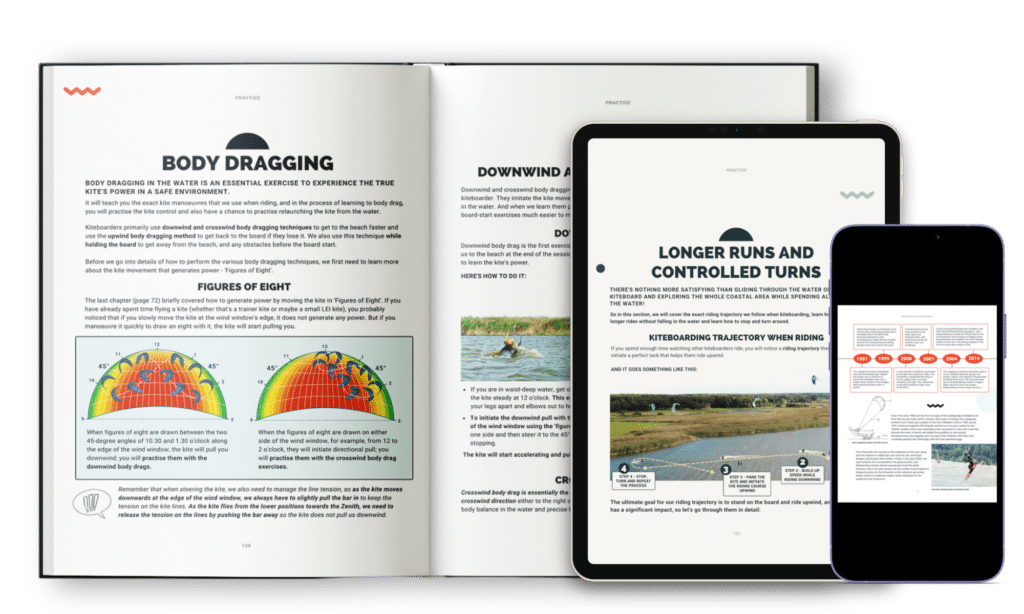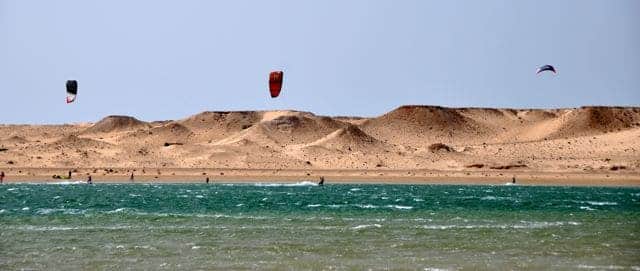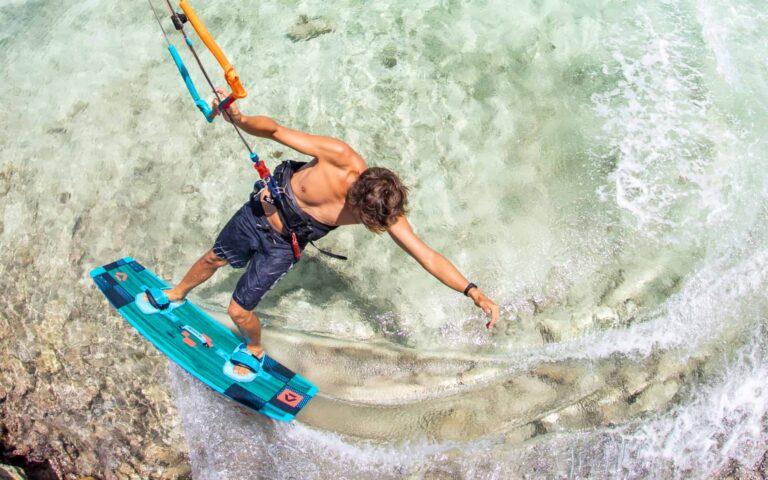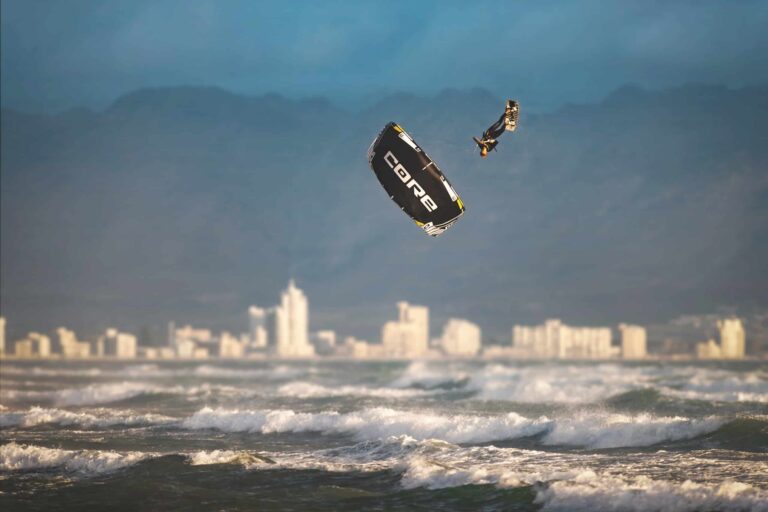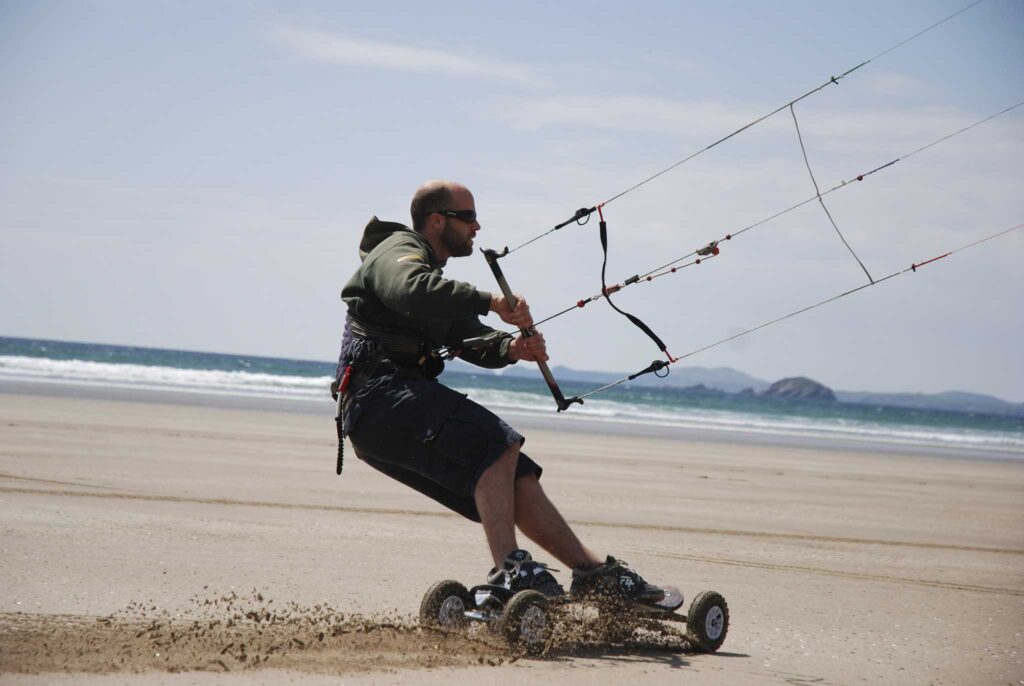Table of Content
Now, as an experienced kiteboarding instructor, I get bombarded with questions about wind predictions and equipment choices, so it’s about time I teach you how to do it!
Don’t worry; understanding weather forecasts doesn’t require a meteorology degree. With a bit of knowledge of WHAT to look for and HOW to read the forecast correctly, you’ll be confidently planning your sessions in no time!
There are two essential steps to follow to read the weather forecast accurately. Firstly, you need to identify the weather forecast models that best represent the location where you intend to kite. Secondly, you need to read and comprehend the information provided in that particular forecast.
Step 1
Weather Forecast Models
Have you ever noticed the bunch of letters on your favourite forecast website, the ICON 7, AROME, WRF, ECMWF, and others? They are the weather forecast models!
So what are they, and why are they important to know?
Imagine a giant, invisible grid covering the Earth. At each intersection point, powerful computers process large amounts of data from various sources such as satellites, weather stations and radars. This data provides information on the current atmospheric conditions, such as temperature, pressure, humidity, and wind speed.
However, what’s truly remarkable is that weather forecast models don’t just describe the present conditions. They utilise complex mathematical equations to predict how these conditions will change over time.

Each model has strengths and weaknesses, and some will be more accurate depending on your location. All models are generalised in two categories:
- Global models: Broad forecasts for large regions or the entire globe (e.g., ECMWF, GFS)
- Regional Models: These provide detailed forecasts for smaller areas with finer resolution (e.g., ICON 7, WRF); they might even predict local wind effects like sea breezes.
All models differ in resolution, range and update frequency:
Resolution
Imagine the grid we mentioned earlier. Resolution refers to the spacing between those grid points. Most weather forecast websites show the resolution in km; for example, ICON 13 is a model with a 13km distance between the grids. WRF in some regions has only 3km resolutions, meaning it has more data points and, therefore, provides more detailed forecasts for smaller areas.
Range
Refers to how far into the future a model can make predictions. Global models, with their coarser resolution, can predict conditions for up to 10 days in advance. Regional models, with finer detail, typically focus on shorter timeframes, like 2-3 days.

Update Frequency
It tells you how often the model’s calculations are re-run with fresh data. Most operational models update several times a day, typically every 6 or 12 hours. This allows them to incorporate the latest weather observations and refine their predictions as conditions evolve. More frequent updates generally translate to more accurate forecasts, particularly for shorter timeframes.
Websites like Windy and Windguru offer a host of weather models. The best one for you depends on where you’re kiting. For instance, the NAM or HRRR models might be especially accurate in North America. In Europe, the ECMWF and ICON models are used the most.
YOUR MISSION:
Figure out which weather models are most accurate for your chosen kite spot. Start by comparing global models to check the general overview for the wind and weather for the 10 days in advance. Then, look at regional models with the shortest resolution to get the most up-to-date forecast for your session.
Don’t be afraid to experiment with different websites and check which models seem most reliable for your spot. You might find that some premium subscriptions are worth the cost to access the most accurate, short-range regional models.
Here’s the list of the most common models and their characteristics:

Step 2
Reading the Weather Forecast
Once you know the weather forecast models that work in your favourite kite spot, let’s learn to read the forecast for your kiteboarding session. When we look at the forecast, we consider four things: the wind direction, tides, wind speed, and live wind readings.
Wind direction
Wind Direction tells you where to kite.
Different kiteboarding spots are best suited for different wind directions. For instance, if the forecast is for wind from the SW, we will look for the beach that faces that direction. Most forecast providers offer map representations of the current wind patterns, which clearly show wind direction and even include kite spots in the area, making choosing the perfect kiteboarding spot easier.
Remember, for a safe kiteboarding session, you need to select a spot with a safe wind direction or wait for days when the onshore wind blows in your preferred kite spot. As a general rule, onshore or, ideally, cross-onshore winds are the safest for kiteboarding sessions. However, everything depends on the spot’s topography and whether there is safety boat support.

Tides
Tides dictate when you can kite.
It is a common misconception that only some coastal areas are affected by tides. In reality, tides affect all coastal areas, but to varying degrees. Some areas experience significant tidal shifts, where low tide can expose sandbars and rocks or move the water out of the kiting zone. On the other hand, high tide can flood the beach, making the launch area non-existent or bring in choppy and wavy water conditions.
As a general rule, high tide is risky for kiteboarders in most locations as it covers the launch area and makes it too deep to walk for beginners, among other things. Hence, we avoid kiting for 2-3 hours on either side of high tide. However, every location is different; in some, you can kite for up to an hour till high tide, while in others, low tide is when you shouldn’t kite. Therefore, there is no one-size-fits-all approach.
Remember that tides bring water movement, and the rule of twelft explains that the first hour before and after the tide time, whether low or high, creates the most water movement and brings in strong currents. Additionally, tide times change every day, so some weeks, the best time to kite might be in the mornings, while in others, it could be in the afternoons. Therefore, tides dictate when we can go kiting, which may not always be when we want to.
Wind Speed
Wind Speed helps us decide what equipment we should take with us.
When selecting the size of your kite, focus on the strongest gusts in the forecast rather than the average wind speed. This will help you avoid being overpowered during your session.
To determine the ideal kite size, consult the wind range charts provided by the manufacturer of your kite. For instance, if you have a Duotone Evo kite, search for the “Duotone Evo wind range chart“. These charts consider your weight and recommend suitable kite sizes for various wind conditions. If you cannot find the wind range chart for your specific brand of kite, you can use generic wind range calculators like this one.
TOOLS
Kite size calculators
Custom kite size calculators to help kiters choose the correct kite size for their sessions on whichever board they are riding. Just select your weight and the average wind speed for a recommendation of what kites to bring with you to the beach.
Keep in mind that your kiteboarding setup is influenced by factors other than just the kite size. Your weight, skill level, preferred style, and board size all play a role in determining the ideal wind range. Experienced riders can adjust their gear based on these factors, but as a beginner, it’s best to stick to the wind range charts and focus on the forecast’s gusts to ensure a safe and enjoyable session. With time, you’ll learn what works best for your individual style!
Live wind reading
Live Wind Readings tells you if your predictions were correct.
Evaluating the predicted forecast is crucial to decide where and when to go kiteboarding and what equipment to take with you. However, the actual wind direction and speed at the time of your session matter the most.
The only way to determine the exact wind conditions is to measure them with an anemometer or observe live weather station readings.
Fortunately, most kitespots have live weather meters you can check, and many weather forecast websites display the nearest weather stations. Thus, the best way to determine the forecast’s accuracy is by comparing it with the live weather reading at the spot. If the readings are similar, then the predictions for the day are likely to be correct.

Pro Tips:
- Know the Spot: Spend time understanding the typical wind patterns and potential changes throughout the day at your chosen kite spot. Storms, rain showers, and local effects like thermal winds can all shift wind direction and intensity.
- Be Adaptable: Be prepared to stop your session if the weather conditions drastically change and no longer match your abilities. More importantly, if you realise you’ve brought the wrong gear, don’t risk it. The most common injuries in kiteboarding often stem from kiters making poor choices when going out in unsuitable conditions.
- Local Knowledge is everything: If you’re exploring a new kitespot, always consider a refresher lesson with a local instructor. They will offer insights into safety guidelines and weather patterns unique to the location and might even help boost your skills. Even if you’re an experienced rider, chatting with local kiters and instructors about the specifics of the spot is invaluable.
Let us know if you have any questions! Drop them in the comments or join our Facebook group for even more support.

